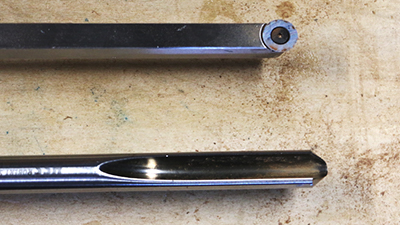Whenever a new style or method comes out, there is always a debate about whether the new or old way is best. The same can be said for carbide woodturning tools. Since the carbide invention in 1938, high-quality, durable tools have been made from carbon-based material, but many still prefer the traditional high-speed steel cutting tools.
Traditional High-Speed Steel tools will outperform carbide tools in most categories and are better for experienced woodturners. In comparison, Carbide tools are easier to maintain and will get the job done but are not nearly as precise or versatile as their high-speed steel counterparts.
In the following article, the major differences between Carbide and Wood Turning tools are laid out, and each’s pros and cons. After reading this article, you should be able to assemble a set of woodturning tools that fits your needs without wasting money on a superfluous tool or part. Also, a brief history of woodturning tools, both carbide and traditional, is given so you can better understand where the tools come from.
The Differences Between Carbide and Traditional Tools
The major differences between carbide and traditional high-speed steel tools lie in the versatility, price, and ease of use. Despite being around for quite some time, many seasoned woodturners’ frown upon carbide tools. However, they are easier to use and allow beginners to learn the craft’s basics at a much quicker pace.
Carbide tools are made by combining the element Tungsten, whose symbol on the periodic table is W, with carbon to produce a tough substance. Tungsten has been known as a powerful and useful element in the workforce since the 1600s. The symbol W comes from its other name, Wolfram, which it received for the way it seemed to devour other metals during the smelting process.
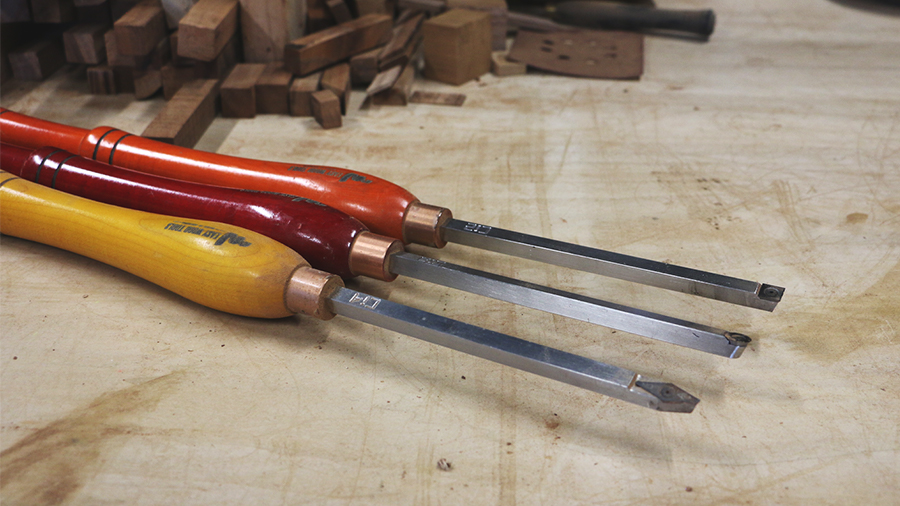
Advantages of Carbide Tools
According to AZ Carbide, Carbide tools are also easier to maintain and will save you money in the long run, as they come ready to use upon purchase and often can go many months without sharpening. For someone on a budget who is trying to get into woodturning or just learn the basics, there is no reason not to get carbide tools.
Even woodturning veterans should keep a set of Carbide tools on hand, as their ease of use and durability can vastly speed up the basic, more grueling aspects of woodturning. Despite being looked down upon by some experienced woodturners, carbide tools hold their own when put to the test.
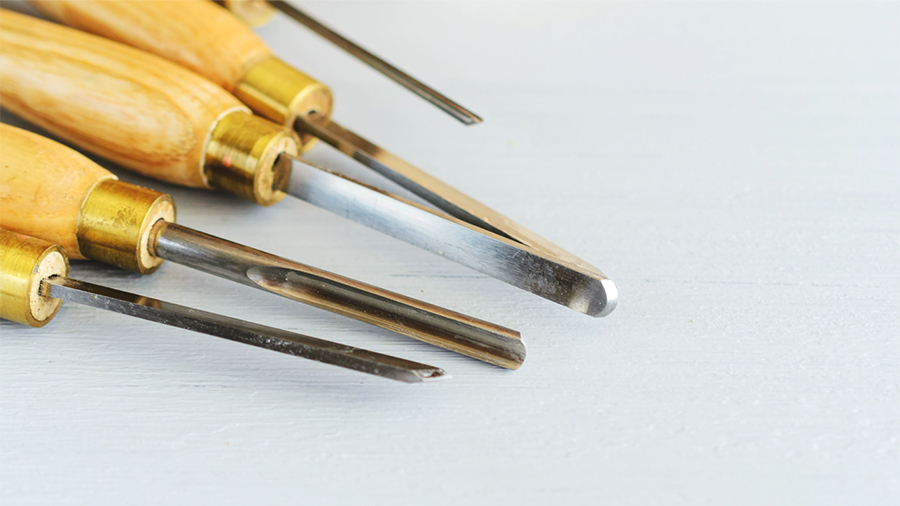
Advantages of High-Speed Steel Tools
According to Woodcraft.com, where traditional high-speed steel tools shine is in their precision, versatility, and feel. For a seasoned woodturner, feeling out every bump and cut in the wood is an important part of the process. On the other hand, a novice may find it a pointless hassle.
The versatility of traditional tools can also not be understated, as carbide cannot keep up with high-speed steel precision and different beveled edges. Bevels allows a tool to be more customizable and take the place of other tools, which might save you money since owning the proper bevel or attachment is cheaper than buying a brand-new tool. Also, high-speed steel tools cut the wood more smoothly and often make the post-cut sand a shorter and easier process. When precision is king, high-speed steel is unmatched.
Below is a table laying out the major differences between carbide and high-speed steel so you can make the best decision for your needs.
Table of Wood Turning Tools and Carbide and Traditional Tools (Pros and Cons of Each Tool)
| Carbide | Traditional (High Speed Steel) | |
| Learning Process/Ease of Use | One of the biggest advantages of the newer carbide tools is not only how easy they are to learn to handle but also how easy they are to use. If you are looking to learn or practice woodturning, then carbide tools are perfect for you. | High Speed Steel tools are very difficult to master and take a lot of time to learn how to use and maintain properly. While they do offer great variety, you need to make sure you have the basics down before investing in traditional tools. |
| Sharpening/Maintenance | Carbide tools are much easier to maintain as they only need to be sharpened every few months or so. In addition, they are usually ready to use on purchase. Instead of a traditional sharpening station, carbide tools are sharpened with a Rotate Cutter. If you don’t want to mess with sharpening your carbide tools, you may also just replace the tips. | Traditional wood cutting tools are a lot of work to maintain, and you will spend many a time at your sharpening station before being able to get back to work. If you decide you want to buy high speed steel tools, make sure you know how to use a sharpening station and have one on hand or you will spend more time waiting then working. |
| Cost | Carbide tools are more expensive up front, but they also are easier and less expensive to maintain. In the long run, carbide tools are most likely going to be less expensive since you won’t have to maintain them as often. | Traditional tools are often less expensive to buy at the outset but are often more expensive to maintain, as they need to be constantly sharpened. In addition, traditional tools are not always ready to be used on purchase, so getting a sharpening station with them is a must. |
| Cut Quality | Carbide tools will do your basic cuts just fine but struggle to match the precision of high-speed steel. So, use traditional tools if you plan on elaborate wood working, but otherwise carbide will get the job done, just may be slightly rougher. | High speed steel, if well sharpened and maintained, will give you the highest possible quality cuts. If you have only ever used carbide, the smoothness of the wood after a traditional cut may surprise you. However, remember these tools are harder to use and less forgiving. |
| Versatility | Carbide tools are not versatile. They are pretty much only good for the one job they are designed for and struggle in other areas. However, they can be used for both spindle and bowl turning. | Traditional tools are much more versatile than carbide tools due to their precision and ability to support bevels. Precision helps with versatility because it allows the tools to be used in a variety of different ways and angles in the hands of a skilled wood cutter. Make sure you know what you are doing before you use a tool for something outside its intended use, however. |
| Bevel Support | Carbide tools do not have bevel support. | Traditional tools do have bevel support, which is one of the reasons they are so versatile. Bevels are usually purchased separately, so make sure they are compatible with your tools. |
| Precision | Carbide tools are only good for doing basic cuts and are not very precise. | High speed steel tools are the most precise available, and even basic cuts will be noticeably smoother than carbide tools. |
How to Sharpen Carbide vs. Traditional High-Speed Steel
Another difference between carbide and traditional tools is the method in which they are sharpened. Carbide tools are sharpened using a rotate cutter, and high-speed steel is sharpened using a traditional sharpening station. Below is a more in-depth breakdown, so read on if you are interested in learning more about sharpening and maintaining your tools.
How to Sharpen Carbide Tools
To sharpen carbide tools, you use a rotate cutter with a grinding wheel. According to UKO Carbide, there are two main types of grinding wheels, an aluminum grinding wheel and a silicon carbide grinding wheel.
Aluminum grinding wheels are typically white and feature sand grains that are tough enough to sharpen hard materials like carbide. These grinding wheels can also be used to sharpen high-speed steel tools. They may also be known as corundum wheels.
Silicon carbide grinding wheels are usually green. They have a very high hardness that makes them great for sharpening carbide, but they are also way more brittle than aluminum wheels, so only use silicon carbide if you know you can store the wheel safely.
According to UKO Carbide, the thickness of these wheels are typically expressed by their particle size. The larger, coarse particles are used for rough grinding, whereas the smaller, fine particles are used for fine grinding. Once you have selected the correct grinding wheel, follow the steps listed below to sharpen your carbide turning tool.
- Begin by grinding off the welding slag on both sides of the turning tool’s blade’s surface.
- Second, smooth the bottom surface of the turning tool, and second, check that all surfaces are perfectly clean.
- Next, grind the shank of the main flank as well as the secondary flank of the turning tool.
- Fourth, see if you need a chip break for the grinding tools. If you do, finely grind the main and secondary flanks, then, if necessary, finish the grinding with a negative chamfer.
If you are new to sharpening, some basic tips are to make sure that you have the proper cutting angle at all times and make sure both your hand and the tools are steady and controlled at all times. Do not operate a cutter if you have consumed alcohol or are on drugs that may cause your hands to shake. You should always wear proper protective gear and clothing.
Alternatives to Using a Machine Grinder
While you can use the right rotary grinder on traditional tools, you can also use a whetstone and sharpen your high-speed steel by hand. According to Woodcraft.com, many woodturners actually prefer to sharpen their tools by hand as it gives them more precision and control over their expensive, precious instruments.
Sharpening is very close to turning, so if you are a beginner, practicing sharpening your tools can help you practice your turning and vice versa. However, sharpening your tools by hand is much more energy and time-consuming, so if either of those are of the essence, you should invest in a machine cutter and station.
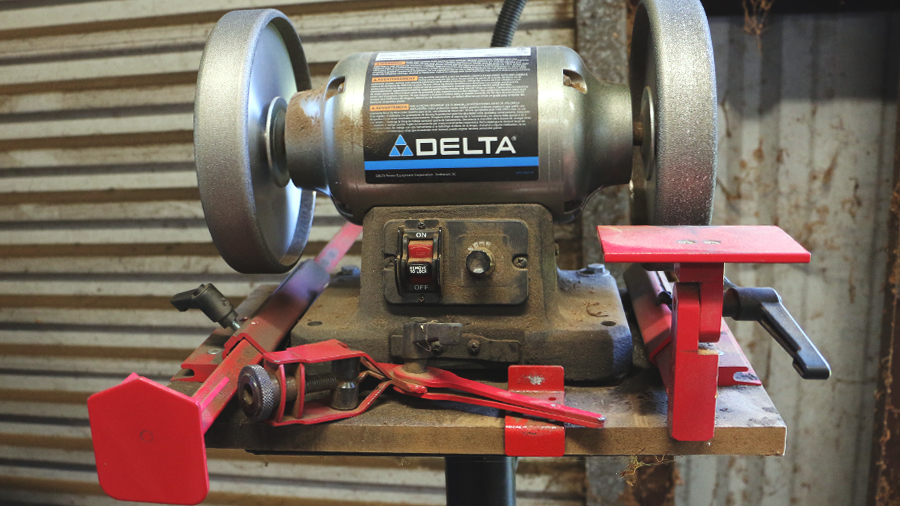
The Tools Every Woodturner Needs
In this section, you will find a description and use for the different lathes, grinders, wheels and tools you might need to complete your woodturning set. According to Woodcraft.com, there are the tools that every woodturner needs on hand to be ready to accomplish any task.
- Sharpening Equipment– Regardless of if you are planning on hand-sharpening or machine sharpening, it is a must to have this equipment nearby. If you do choose to have a machine sharpener, make sure you have the proper wheel, a solid base, and a quality tool rest.
- Diamond Parting Tool– While parting tools come in three different shapes, the diamond parting tool is the one you will want to start with. If the need arises, you can always pick up a flat or fluted parting tool at another date. However, the diamond parting tool is a must have and, because it usually comes at a 50-degree angle, it only needs some brief work in order for you to use it right after purchase!
- Scraper– A scraper is a must-have to make that perfect, smooth as silkwood surface. Make sure your scraper is properly maintained and has a burr before use. If it doesn’t, give it a quick touch up at your grinder or draw a burr to ensure only the smoothest wood.
- Skew Chisel– Probably the sharpest tool on the list, the skew chisel is used to finish off those long, smooth curves and is vital to any woodturner. The perfect tool for spindle turning, many professionals avoid sharpening their chisels with a traditional grinder to ensure they get it as sharp as possible without chipping the edges. You can do this by hand sharpening or by using a sander with the right grit of sandpaper.
- Spindle Gouge– The spindle gouge is used to form curves, bends, and arches in the wood. Make sure you understand how to sharpen it, as its long, tapered end makes it one of the most difficult tools to sharpen. In order to do so, you must move it up slowly on the wheel to grind the wings while you simultaneously sharpen the tapered end.
- Rough Spindle Gouge– It differs from the above, regular spindle gouge in that it is a more down and dirty tool. It digs deep in the wood to produce cylinders and is another tool that comes out of the box, just needing a slight touch up before use.
- Bowl Gouge– The last item on the list is a bowl gouge. It is one of the deepest angled tools on the list, sitting at upwards of 80 degrees, and is perfect for creating deep, rounded bowls as its name suggests.
To wrap up the basic woodturners set, here is a recommendation of what tool sizes are typically the most versatile and used: a 1/2 inch round nose scraper, a 3/4 inch skew, a 1/2 inch bowl gouge, an 1/8 inch diamond parting tool, a 3/8 inch spindle gouge and a 3/4 inch spindle roughing gouge. This should be a good base set for any woodturners collection.
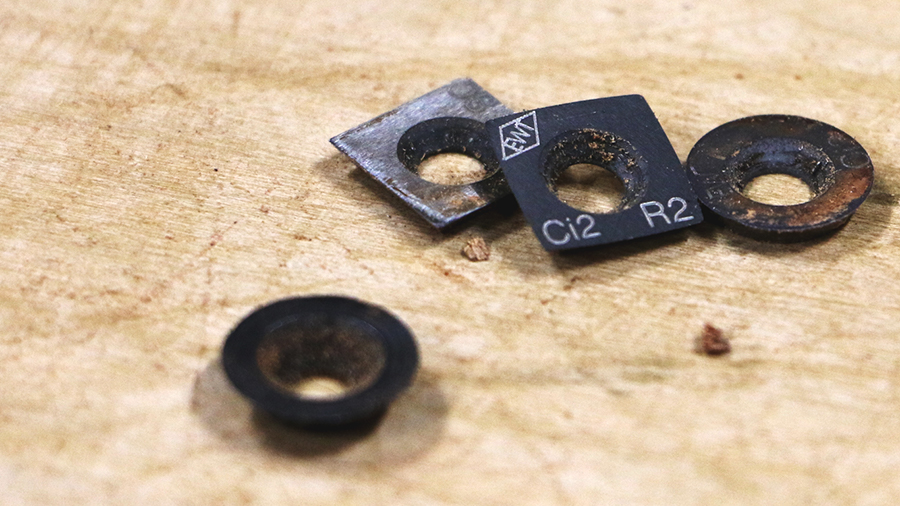
Carbide Inserts
If you choose to use some carbide tools, you may come across inserts that can be purchased instead of just your regular tool. These inserts are replaceable parts, but it is still recommended that you take proper care of them as they are valuable.
You will know that your carbide inserts have started to dull when they begin to rattle, shake, and fail to cut through wood as easily. You can sharpen them using a 600 and 1,000 grit diamond sharpener and some lapping fluid. It would be best if you remembered not to attempt to sharpen the bevel side as it will make the insert useless.
It is also important to remember that carbide inserts are usually quite thin and easily broken or damaged if not stored in the right conditions. Make sure to avoid extreme heat or cold for long periods of time when storing your inserts. If you believe they may have been exposed to these conditions, it is best to test the inserts to ensure they are safe before using them.
Conclusion
In conclusion, you read about all the differences between carbide and traditional high-speed steel tools, when to use one over the other and how to take care of your tools. In addition, you should also now know the essential equipment that every woodturner needs to thrive. If you are already a seasoned woodturner, take this information, and focus on expanding your knowledge. But if you are a novice, make sure you are well prepared before attempting to use any of the tools on our list!

